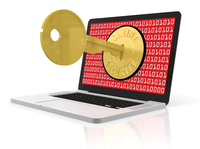
Lead Image © Jeff Metzger, 123RF.com
Hardware-enhanced security
Key to Security
Consumer-grade security implemented by software is cost effective for most users, who may install and run password managers, encryption tools, and other privacy programs for virtually no cost; however, software comes with limitations.
Most users can live with these limitations, but if you are exceptionally conscious of your privacy or handle top secret data, you do not want to take any chances. Thankfully, you have alternatives to running your security applications in software only: Nitrokey.
Enter the Key
Nitrokey GmbH [1] is a German hardware company focused on security products. Its main product line is a variety of Nitrokeys, which are hardware authentication tokens in the form of pen-drive-sized units that connect to your computer or server over the universal serial bus (USB). The manufacturer offers a whole range of models with different capabilities, with prices ranging from EUR29 to 109 (VAT not included; or about $25--$88). They also produce a line of Qubes OS-certified laptops and Nextcloud appliances and provide a free Matrix instance for those who want a secure chat platform.
The Nitrokey website claims that their hardware can be used to enhance the security of certain web logins, email encryption, hard disk encryption, and SSH access. Whether this is true, and whether a Nitrokey is worth the cost, is what I intend to determine in this article.
I am reviewing Nitrokey Storage 2, the most featureful Nitrokey available. For EUR109 plus taxes and shipping, you get a Nitrokey with 16GB of encrypted, tamper-resistant storage, a password manager, and a sticker (Figure 1). What it lacks is a manual, which is disappointing. For the price, they should have included at least a quickstart guide. Instead, a label in the packaging instructs you to check the online
...Buy this article as PDF
(incl. VAT)
Buy ADMIN Magazine
Subscribe to our ADMIN Newsletters
Subscribe to our Linux Newsletters
Find Linux and Open Source Jobs
Most Popular
Support Our Work
ADMIN content is made possible with support from readers like you. Please consider contributing when you've found an article to be beneficial.







